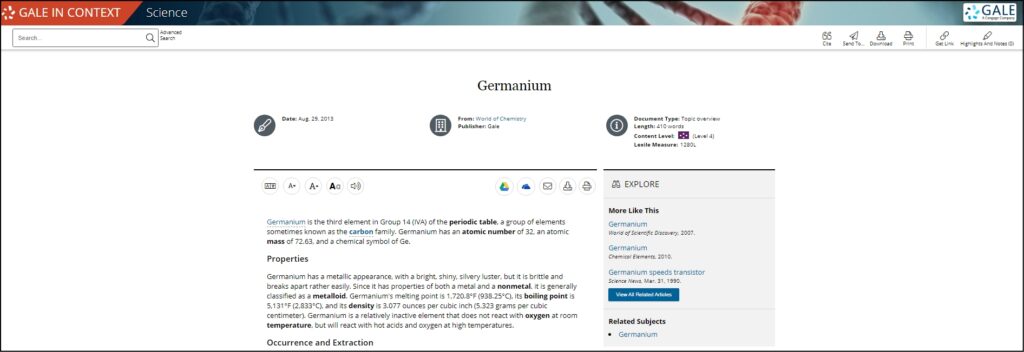| By K. Lee Lerner |
Rare earth elements (REEs) are crucial for various advanced technologies, and China is a dominant global supplier. There are bountiful REEs in the United States, including significant REE deposits in Texas (being developed by the state of Texas), a high-grade rare earth deposit in Montana (U.S. Critical Materials’ Sheep Creek property), and an estimated 2.34 billion metric tons of REEs near Wheatland, Wyoming, at the Halleck Creek site that could be one of the largest rare earth discoveries in the world. With these resources, it’s in the processing and refined production of REEs (especially rare earth magnets) that the U.S. is now strategically vulnerable.
Rare earth elements, a group of 17 metals, are used in a missiles, shells, lasers, and in both computer and communications systems. REEs are vital to developing energy technologies needed to meet global decarbonization goals.
China produces more than half the world’s supply of REEs from its own mines and extends that dominance by processing raw REE ore found in mines located in other countries. By importing raw ore and then exporting refined REEs, China controls an estimated 90 percent of the refined REE market. In some cases, especially involving heavier REEs upon which the U.S. depends, China separates and exports 99.9 percent of the REE supply.
In August 2023, China began restricting exports of gallium and germanium, elements with broad applications in electronics and fiber optics. In December 2023, China added export restrictions on high-grade graphite used in the anodes of lithium-ion batteries, especially electric vehicle (EV) batteries. China also began banning REE extraction and separation technologies, a move critics claim was designed to hinder efforts by other countries, including the U.S., to close the processing gap.
In 2020, to bolster U.S. extraction and processing efforts, the U.S. government used the Defense Production Act (DPA) to award $9.6 million to MP Materials toward efforts to increase the company’s light REE separation capacity at its California extraction site. At the time, it was also the only U.S.-based REE extraction operation. In 2022, the Department of Defense awarded $35 million more to MP Materials to extend extraction and separation capacity into heavier REEs (including finished magnet production).
In 2021, the U.S. awarded $30.4 million to an Australian company, Lynas Rare Earths Ltd, to help it develop additional separation capabilities for light REEs. In 2022, another grant of $120 million to Lynas was designed to develop and build a large-scale separation and processing facility for heavier REEs.
In December 2023, the Select Committee on the Strategic Competition between the United States and the Chinese Communist Party recommended Congress “should incentivize (specifically via tax incentives) the production of rare earth element magnets, which are the principal end-use for rare earth elements and used in electric vehicles, wind turbines, wireless technology, and countless other products.”
The U.S. will need to play rapid catchup to China in solvent extraction of REEs. Even if America made an all-out effort to build extraction and refinement capacity, as well as building international cooperative efforts with allies, it could still take several years to make new REE extraction and processing facilities fully operational, thus extending the current window of strategic vulnerability.
 About the Author
About the Author
Recognized for his use of language, accuracy, and balanced presentation, K. Lee Lerner’s portfolio covering science and global issues for Cengage includes two ALA RUSA Book and Media Awards and two works named Outstanding Academic Titles. Holding degrees in science, education, and journalism, including a master’s degree with academic honors from Harvard, Lerner has served on the board of advisors for the venerable American Men and Women of Science since 2003 and, along with Brenda Wilmoth Lerner, as coeditor for three editions of the Gale Encyclopedia of Science. He was the contributing editor-in-chief for Gale’s Encyclopedia of Espionage, Intelligence, and Security. A member of the National Press Club in Washington, DC, Lerner is an experienced aviator and sailor who has completed two global circumnavigations. His Academia site consistently ranks among those most frequently accessed by students, scholars, and decision-makers from around the world. Additional information may be found at https://scholar.harvard.edu/kleelerner and https://harvard.academia.edu/KLeeLerner/




